The Structural Transformation of the Public Sphere
description: book by Jürgen Habermas
30 results

Wonderland: How Play Made the Modern World
by
Steven Johnson
Published 15 Nov 2016
The first person to hang out a shingle and serve drinks to paying customers—at some point back in the dawn of civilization—almost certainly had no idea that his or her innovation would ultimately support political and sexual revolutions that would reverberate around the world. A space originally intended for play and leisure became, improbably enough, a hotbed of dangerous new ideas. These kinds of spaces played a defining role in one of the most influential works of sociology published in the twentieth century: Jürgen Habermas’s The Structural Transformation of the Public Sphere. Originally conceived while Habermas was working as a graduate student under the legendary Frankfurt School Marxists Theodor Adorno and Max Horkheimer, the book was actually his doctoral dissertation, though Habermas broke off with his mentors due to their “paralyzing political skepticism.”
…
And, like the Black Cat and the Stonewall Inn two centuries later, it was a space that “presupposed the problematization of areas that until then had not been questioned.” For Habermas, the public sphere was not simply architectural; it was also facilitated by new developments in media, particularly the rise of pamphleteering that was so central to Enlightenment discourse. Taverns, salons, and drinking societies play a role in The Structural Transformation of the Public Sphere. (Had Habermas focused more on the American Revolution, they might have even had a starring role.) But for Habermas, the revolutionary ideas of the eighteenth century were ultimately dependent not on the beer and wine of tavern culture, but on another drug that had just arrived in the cities of Europe: coffee
…
.: A History of Sexual Outlaws, Power Politics, and Lipstick Lesbians (New York: Basic Books, 2006, Kindle edition), Kindle locations 1864–1872. “paralyzing political skepticism”: Craig Calhoun, Contemporary Sociological Theory (New York: John Wiley & Sons, 2012), 256. Habermas observed: Jürgen Habermas, The Structural Transformation of the Public Sphere: An Inquiry into a Category of Bourgeois Society (Cambridge, MA: MIT Press, 1989), 26. “a kind of social intercourse”: Ibid. “When insects feed on caffeine-spiked nectar”: Carl Zimmer, “How Caffeine Evolved to Help Plants Survive and Help People Wake Up,” The New York Times (September 4, 2014).

Delete: The Virtue of Forgetting in the Digital Age
by
Viktor Mayer-Schönberger
Published 1 Jan 2009
Ibid., 112. 40. Ibid., 99; see also Graff, The Legacies of Literacy, 303–14. 41. Eliot, “Never Mind the Value, What about the Price,” 188. 42. Ibid., 165; Kilgour, 112. 43. The most famous description and analysis of these spaces of public discourse is found in Habermas, The Structural Transformation of the Public Sphere. 44. The situation was somewhat different in the United States, where owners of local printing presses often published local newspapers to provide them with a much-needed additional revenue stream. Far away from global news, those living in North America desired newspapers as a connection to the rest of the world.
…
Greenwald, Glenn. “What Does Sarah Palin Have to Hide in Her Yahoo E-mails?” Salon.com. Sept. 18, 2008. http://www.salon.com/opinion/greenwald/2008/09/18/privacy/. Griswold, Charles L. Forgiveness: A Philosophical Exploration. New York: Cambridge University Press. 2007. Habermas, Jürgen. The Structural Transformation of the Public Sphere: An Inquiry into a Category of Bourgeois Society. Cambridge: MIT Press, 1991. Halderman, J. Alex, Brent R. Waters, and Edward W. Felten. “Privacy Management for Portable Recording Devices.” Workshop on Privacy in Electronic Society, November 2004. Hansell, Saul. “Sellers Give Negative Feedback on eBay Changes.”

The Smartphone Society
by
Nicole Aschoff
According to the Authors Guild, the median pay of a full-time writer today is $20,300. See “Six Takeaways from the Author’s Guild 2018 Author Income Survey,” www.authorsguild.org/industry-advocacy/six-takeaways-from-the-authors-guild-2018-authors-income-survey. 41. Habermas, The Structural Transformation of the Public Sphere, cited in McChesney, Digital Disconnect, 66. 42. Bell, “Facebook Is Eating the World.” 43. For a detailed analysis of this transition see Zuboff, Surveillance Capitalism, chapter 3. 44. The Financial Times has followed these cases closely. See, for example, Toplensky, “EU Fines Google €2.4bn over Abuse of Search Dominance”; Waters, Toplensky, and Ram, “Brussels’ €2.4bn Fine Could Lead to Damages Cases and Probes in Other Areas of Search;” Barker and Khan, “EU Fines Google Record €4.3bn over Android.” 45.
…
Fordlandia: The Rise and Fall of Henry Ford’s Forgotten Jungle City. New York: Metropolitan Books, 2009. Greenfield, Adam. Radical Technologies: The Design of Everyday Life. London: Verso, 2017. Gregory, Alice. “This Startup Wants to Neutralize Your Phone—And Un-Change the World.” Wired, January 16, 2018. Habermas, Jürgen. The Structural Transformation of the Public Sphere: An Inquiry into a Category of Bourgeois Society. Cambridge, MA: MIT Press, 1989. Cited in McChesney, Digital Disconnect. Harari, Yuval. 21 Lessons for the 21st Century. New York: Spiegel & Grau, 2018, Kindle edition. Haraway, Donna J. “A Cyborg Manifesto: Science, Technology, and Socialist Feminism in the Late Twentieth Century.”
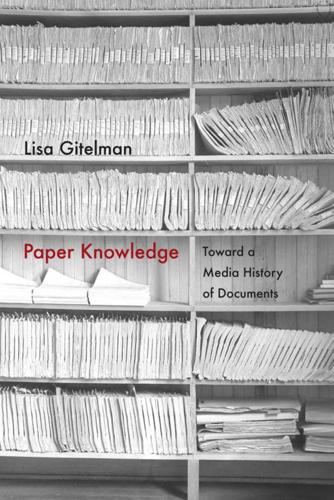
Paper Knowledge: Toward a Media History of Documents
by
Lisa Gitelman
Published 26 Mar 2014
There is a longer history of printed punctuation of which these blanks are part; see, for example, Joan DeJean, The Reinvention of Obscenity: Sex, Lies, and Tabloids in Early Modern France (Chicago: University of Chicago Press, 2002), 34–35. 14. Classic accounts include Jürgen Habermas, The Structural Transformation of the Public Sphere: An Inquiry into a Category of Bourgeois Society, trans. Thomas Burger with Frederick Lawrence (Cambridge, MA: mit Press, 1989); Benedict Anderson, Imagined Communities: Reflections on the Origins and Spread of Nationalism, rev. ed. (London: Verso, 1991); James Carey, Communication as Culture: Essays on Media and Society (Boston: Unwin Hyman, 1989), 13–36. 15.
…
“Genesis of the Media Concept.” Critical Inquiry 36, no. 2 (2010): 321–63. ———. “The Memo and Modernity.” Critical Inquiry 31, no. 1 (2004): 108–32. Guyer, Jane I. Marginal Gains: Monetary Transactions in Atlantic Africa. Chicago: University of Chicago Press, 2004. Habermas, Jürgen. The Structural Transformation of the Public Sphere: An Inquiry into a Category of Bourgeois Society. Translated by Thomas Burger with Frederick Lawrence. Cambridge, MA: mit Press, 1989. 194 WORKS CITED Hardt, Michael. “Affective Labor.” boundary 2 26, no. 2 (1999): 89–100. Hariman, Robert and John Louis Lucaites. No Caption Needed: Iconic Photographs, Public Culture, and Liberal Democracy.
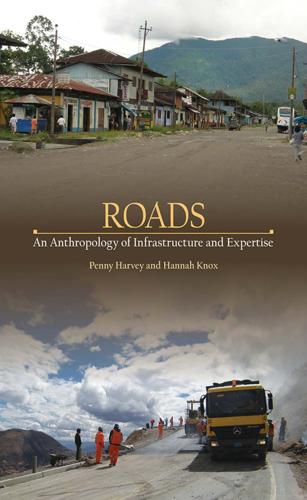
Roads: An Anthropology of Infrastructure and Expertise (Expertise: Cultures and Technologies of Knowledge)
by
Penny Harvey
and
Hannah Knox
Published 22 Jun 2015
Prompted by the regular occurrence of these kinds of confrontations, this chapter extends our discussion of the politics of infrastructural projects into a consideration of the status of road construction projects as public works. Since Habermas (1989), the analysis of contemporary political processes has acknowledged that alongside the state there lies a parallel and equally important political formation that we call “the public.” In The Structural Transformation of the Public Sphere, Habermas demonstrated how the development 16 8 Chapter 6 of the modern nation-state was paralleled by the simultaneous development of a public sphere of rational political debate within which issues of politics were constituted as problems that should be debated by the population, whose interests the state represented and in whose name it acted.
…
Khan, J. Obarrio, C. Bledsoe, J. Chu, S. Bachir Diagne, K. Hart, P. Kockelman, J. Lave, C. McLoughlin, B. Maurer, F. Neiburg, D. Nelson, C. Stafford, and H. Verran, eds. 2010. “Special Section: Number as Inventive Frontier.” Anthropological Theory (10): 1–2. Habermas, J. 1989. The Structural Transformation of the Public Sphere: An Inquiry into a Category of Bourgeois Society. Cambridge: Polity. Haraway, D. 1988. “Situated Knowledges: The Science Question in Feminism and the Privilege of Partial Perspective.” Feminist Studies 14 (3): 575–99. ——. 1991. Simians, Cyborgs and Women: The Reinvention of Nature.

What Algorithms Want: Imagination in the Age of Computing
by
Ed Finn
Published 10 Mar 2017
; for the instruction memo itself, see Thielman, “Facebook News Selection Is in Hands of Editors Not Algorithms, Documents Show.” 36. I borrow these lines from an editorial I wrote on the scandal: Finn, “Facebook Trending Story.” 37. Brian Stelter, “Peter Thiel.” 38. Habermas, The Structural Transformation of the Public Sphere. 39. Thiel, “The Education of a Libertarian. 40. Miller, “I’m Maria Popova, and This Is How I Work.” 41. Bourdieu, The Field of Cultural Production. 42. Greenfeld, “Faking Cultural Literacy.” 43. This disparity has created its own arbitrage opportunities, like the Congress-Edits Twitterbot that announces each anonymous edit to Wikipedia made from IP addresses at the U.S.
…
Learning, Media and Technology 34 (2) (June 1, 2009): 119–140. doi:10.1080/17439880902923580. Habermas, Jurgen, and Thomas McCarthy. The Theory of Communicative Action: Lifeworld and System: A Critique of Functionalist Reason. New York: Beacon Press, 1985. Habermas, Jürgen. The Structural Transformation of the Public Sphere: An Inquiry into a Category of Bourgeois Society. Cambridge, Mass.: MIT Press, 1989. Hafner, Katie. “Researchers Yearn to Use AOL Logs, but They Hesitate.” New York Times, August 23, 2006, sec. Technology. http://www.nytimes.com/2006/08/23/technology/23search.html. Hallinan, Blake, and Ted Striphas.
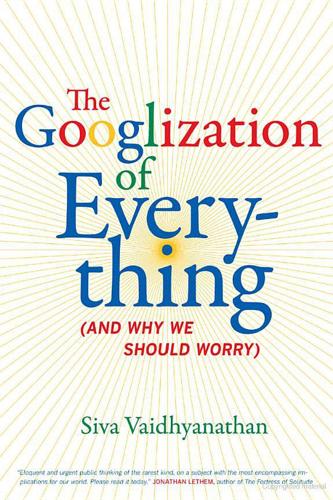
The Googlization of Everything:
by
Siva Vaidhyanathan
Published 1 Jan 2010
When it comes to the Web and the influence of Google on the Web, we can see a case study in which Habermas’s narrative of the collapse of the public sphere has unfolded in a very short time.50 The global network of networks that we call the Internet represents the first major revolution in communications to occur since Habermas’s influential historical work, The Structural Transformation of the Public Sphere, was first published in 1962.51 Habermas described a moment in the social and political history of Europe in which a rising bourgeoisie was able to gather in salons and cafes to discuss matters of public concern. The public sphere represented a set of sites and conventions in the eighteenth century in which (almost exclusively male) members of the bourgeoisie could forge a third space between the domestic sphere and the sphere of formal state power.
…
Norton, 2006); Gillian Brock and Harry Brighouse, The Political Philosophy of Cosmopolitanism (Cambridge: Cambridge University Press, 2005); Martha Nussbaum, The Clash Within: Democracy, Religious Violence, and India’s Future (Cambridge, MA: Belknap Press of Harvard University Press, 2007). 49. Jürgen Habermas, “The Public Sphere: An Encyclopedia Article,” in Media and Cultural Studies: Keyworks, ed. Meenakshi Durham and Douglas Kellner (Malden, MA: Blackwell Publishers, 2001), 102–7. 50. Jürgen Habermas, The Structural Transformation of the Public Sphere: An Inquiry into a Category of Bourgeois Society (Cambridge, MA: MIT Press, 1989). 51. Ibid. I use the word revolution cautiously. It is far too early to assess the effects of the Internet in a balanced and sober manner. Hyperbole and fear still dominate the discussions of the effects of the Internet on culture, societies, politics, and economics.

How Not to Network a Nation: The Uneasy History of the Soviet Internet (Information Policy)
by
Benjamin Peters
Published 2 Jun 2016
Michael D. Gordin, Helen Tilley, and Gyan Prakash (Princeton: Princeton University Press, 2010), 2, see also 1–6. 13. Cat video scholarship exists. See Jody Berland, “Cat and Mouse: Iconographics of Nature and Desire,” Cultural Studies 22 (3–4) (2008): 431–454. 14. Jürgen Habermas, The Structural Transformations of the Public Sphere: An Inquiry into a Category of Bourgeois Society (Cambridge: MIT Press, 1989). 15. Nicholas John and Benjamin Peters, “Is the End Always Near? An Analysis and Comment on the End of Privacy, 1990–2012,” unpublished manuscript; Daniel J. Solove, “A Taxonomy of Privacy,” University of Pennsylvania Law Review 154 (3) (2006): 477–560. 16.
…
“Cybernetics and Dialectical Materialism of Marx and Lenin.” In Computing in Russia: The History of Computer Devices and Information Technology Revealed. Edited by Georg Trogemann, Alexander Nitussov, and Wolfgang Ernst, 317–332. Braunschweig: Vieweg, 2001. Habermas, Jürgen. The Structural Transformations of the Public Sphere: An Inquiry into a Category of Bourgeois Society. Cambridge: MIT Press, 1989. Hafner, Katie, and Matthew Lyon. Where the Wizards Stay Up Late: The Origins of the Internet. New York: Simon & Schuster, 1996. Halpern, Orit. “Dreams for Our Perceptual Present: Archives, Interfaces, and Networks in Cybernetics.”

Twitter and Tear Gas: The Power and Fragility of Networked Protest
by
Zeynep Tufekci
Published 14 May 2017
Meltem Ahiska, “Occidentalism: The Historical Fantasy of the Modern,” South Atlantic Quarterly 102, nos. 2–3 (2003): 351–79. 3. Anderson, Imagined Communities. 4. Anthony Giddens, The Consequences of Modernity (Stanford, Calif.: Stanford University Press, 1990). 5. Jürgen Habermas, The Structural Transformation of the Public Sphere: An Inquiry into a Category of Bourgeois Society (Cambridge, Mass.: MIT Press, 1989). 6. Gerard A. Hauser, “Vernacular Dialogue and the Rhetoricality of Public Opinion,” Communication Monographs 65, no. 2 (1998): 83–107, doi:10.1080/03637759809376439.86. 7. Nancy Fraser, Rethinking the Public Sphere: A Contribution to the Critique of Actually Existing Democracy (Milwaukee: University of Wisconsin–Milwaukee, Center for Twentieth-Century Studies, 1990). 8.
…
Leo Mirani, “Millions of Facebook Users Have No Idea They’re Using the Internet,” Quartz, February 9, 2015, http://qz.com/333313/millions-of-facebook-users-have-no-idea-theyre-using-the-internet/. 16. John D. H. Downing, Radical Media: Rebellious Communication and Social Movements (Thousand Oaks, Calif: Sage Publications, 2000). 17. Jürgen Habermas, The Structural Transformation of the Public Sphere: An Inquiry into a Category of Bourgeois Society (Cambridge, Mass.: MIT Press, 1989). 18. Aleksandra Gjorgievska, “Google and Facebook Lead Digital Ad Industry to Revenue Record,” Bloomberg.com, April 21, 2016, http://www.bloomberg.com/news/articles/2016-04-22/google-and-facebook-lead-digital-ad-industry-to-revenue-record. 19.
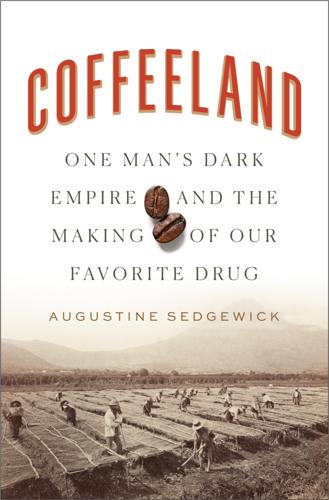
Coffeeland: One Man's Dark Empire and the Making of Our Favorite Drug
by
Augustine Sedgewick
Published 6 Apr 2020
As reported by John Houghton, a Fellow of the Royal Society, in his “Discourse of Coffee,” Philosophical Transactions of the Royal Society 21, no. 256 (September 1699): 311–17; recounted in Ellis, The Coffee-House, 26–41. 14. Cowan, Social Life, 49; Ellis, The Coffee-House, 34–36. 15. For a searchable version, see The Diary of Samuel Pepys, www.pepysdiary.com. 16. Jürgen Habermas, The Structural Transformation of the Public Sphere: An Inquiry into a Category of Bourgeois Society, trans. Thomas Burger with Frederick Lawrence (Cambridge, MA: MIT Press, 1989), 32–33. 17. Cowan, Social Life, 215. 18. Quoted in Habermas, Public Sphere, 59. 19. Cowan, Social Life, 196–99. 20. Cowan, 44–46. 21.
…
Culture, Agriculture, Food & Environment 39, no. 1 (June 2017): 35–42. Grindle, Roger. Quarry and Kiln: The Story of Maine’s Lime Industry. Rockland, ME: The Courier-Gazette, 1971. Guidos Véjar, Rafael. El ascenso del militarismo en El Salvador. San Salvador: UCA Editores, 1980. Habermas, Jürgen. The Structural Transformation of the Public Sphere: An Inquiry into a Category of Bourgeois Society. Translated by Thomas Burger with Frederick Lawrence. Cambridge, MA: MIT Press, 1989. Haggard, Stephan. “The Institutional Foundations of Hegemony: Explaining the Reciprocal Trade Agreements Act of 1934.” International Organization 42, no. 1 (Winter 1988): 91–119.
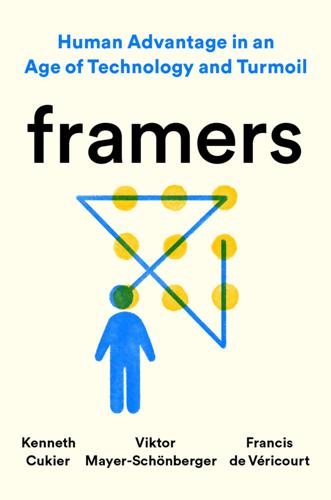
Framers: Human Advantage in an Age of Technology and Turmoil
by
Kenneth Cukier
,
Viktor Mayer-Schönberger
and
Francis de Véricourt
Published 10 May 2021
Quote from his video course: Richard Florida, “Technology, Talent, and Tolerance in the Creative City,” Coursera, accessed November 9, 2020, https://www.coursera.org/lecture/city-and-you-find-best-place/technology-talent-and-tolerance-in-the-creative-city-instructor-video-uVp5h. On the public sphere: Jürgen Habermas, The Structural Transformation of the Public Sphere: An Inquiry into a Category of Bourgeois Society, trans. Thomas Burger (Cambridge, MA: MIT Press, 1989). On deliberative democracy: James S. Fishkin, Democracy When the People Are Thinking: Revitalizing Our Politics Through Public Deliberation (Oxford: Oxford University Press, 2018).
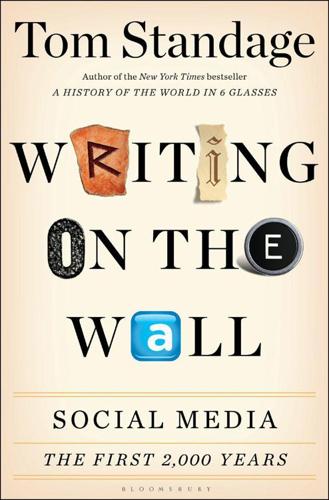
Writing on the Wall: Social Media - the First 2,000 Years
by
Tom Standage
Published 14 Oct 2013
Joseph Goebbels. Munich: Zentralverlag der NSDAP, 1938. Goodman, D. The Republic of Letters: A Cultural History of the French Enlightenment. Ithaca: Cornell University Press, 1994. Gough, H. The Newspaper Press in the French Revolution. London: Routledge, 1988. Habermas, J. The Structural Transformation of the Public Sphere: An Inquiry into a Category of Bourgeois Society. Cambridge: MIT Press, 1989. Haines-Eitzen, K. Guardians of Letters: Literacy, Power and the Transmitters of Early Christian Literature. Oxford: Oxford University Press, 2000. Hampton, K. N., L. F. Sessions, and E. J. Her. “Core Networks, Social Isolation, and New Media: How Internet and Mobile Phone Use is Related to Network Size and Diversity.”

Merchants of the Right: Gun Sellers and the Crisis of American Democracy
by
Jennifer Carlson
Published 2 May 2023
Guynn, J. (2021). President Joe Biden Rescinds Donald Trump Ban on Diversity Training About Systemic Racism. USA Today. Accessed August 12, 2021. https://www.usatoday.com/story/money/2021/01/20/biden-executive-order-overturns-trump-diversity-training-ban/4236891001/. Habermas, J. (1991). The Structural Transformation of the Public Sphere: An Inquiry into a Category of Bourgeois Society. MIT Press. Hagen, R. (2019). Collisions Between Institutional and Populist Risk Imaginaries: The “Dark Side” of Negative Asymmetric Thinking. Sociological Forum, 34(1), 1235–1250. Hall, M., Gould, S., Harrington, R., Shamsian, J., Haroun, A., Ardrey, T., and Snodgrass, E. (2022).

Coding Freedom: The Ethics and Aesthetics of Hacking
by
E. Gabriella Coleman
Published 25 Nov 2012
Nuclear Rites: A Weapons Laboratory at the End of the Cold War. Berkeley: University of California Press. Habermas, Jürgen. 1981. The Theory of Communicative Action: Reason and the Rationalization of Society. London: Beacon Press. 1987. The Philosophical Discourse of Modernity. Cambridge, MA: MIT Press. 1989. The Structural Transformation of the Public Sphere: An Inquiry into a Category of Bourgeois Society. Cambridge, MA: MIT Press. Hadley, Elaine. 2010. Living Liberalism: Practical Citizenship in Mid-Victorian Britain. Chicago: University of Chicago Press. Hakken, David. 1999. Cyborgs@Cyberspace? An Ethnographer Looks at the Future.

Reset
by
Ronald J. Deibert
Published 14 Aug 2020
Oxford Bibliographies defines the “public sphere”: Wessler, H., & Freudenthaler, R. (2018). Public sphere. Retrieved from https://www.oxfordbibliographies.com/view/document/obo-9780199756841/obo-9780199756841-0030.xml European coffee houses and salons: Habermas, J. (1991). The structural transformation of the public sphere: An inquiry into a category of bourgeois society. MIT Press; For critiques of Habermas’s notion of the public sphere, see Fraser, N. (1990). Rethinking the public sphere: A contribution to the critique of actually existing democracy. Social text, (25–26), 56–80; and Squires, C.

Digital Disconnect: How Capitalism Is Turning the Internet Against Democracy
by
Robert W. McChesney
Published 5 Mar 2013
I develop this notion of the problem of the media in a book with the same title. For a longer treatment, see Robert W. McChesney, The Problem of the Media (New York: Monthly Review Press, 2004). 3. Raymond Williams, The Existing Alternatives in Communication (London: Fabian Society, 1962). 4. Jürgen Habermas, The Structural Transformation of the Public Sphere: An Inquiry into a Category of Bourgeois Society (Cambridge, MA: MIT Press, 1989), first published in German in 1962). 5. This Manichaean framing of media options was a function of the Cold War and the nature of Soviet communism; it had nothing to do with Karl Marx or socialist theory.
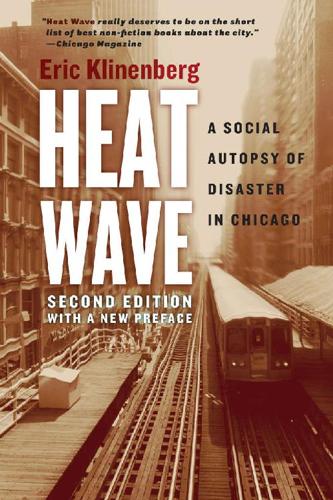
Heat Wave: A Social Autopsy of Disaster in Chicago
by
Eric Klinenberg
Published 11 Jul 2002
Groth, Paul. 1994. Living Downtown. Berkeley and Los Angeles: University of California Press. Gurley, Jan, Nancy Lum, Merle Sande, Bernard Lo, and Mitchell Katz. 1996. Persons found in their homes helpless or dead. New England Journal of Medicine 334:1710–16. Habermas, Jurgen. 1989. The structural transformation of the public sphere. Cambridge, Mass.: MIT Press. Halpern, Robert. 1999. Fragile families, fragile solutions: A history of supportive services for families in poverty. New York: Columbia University Press. Hambleton, Robin. 1990. Future directions for urban government in Britain and America. Journal of Urban Affairs 12:75–94.

The Bookshop: A History of the American Bookstore
by
Evan Friss
Published 5 Aug 2024
GO TO NOTE REFERENCE IN TEXT At roughly the same time: Benjamin Harris, The Protestant Tutor (London: Benjamin Harris, 1679). GO TO NOTE REFERENCE IN TEXT At America’s first: Worthington Chauncey Ford, The Boston Book Market, 1679–1700 (Boston: Club of Odd Volumes, 1917), 27–28; Jürgen Habermas, The Structural Transformation of the Public Sphere: An Inquiry into a Category of Bourgeois Society (Cambridge, MA: MIT Press, 1989). GO TO NOTE REFERENCE IN TEXT The real problem was James: C. William Miller, Benjamin Franklin’s Philadelphia Printing, 1728–1766: A Descriptive Bibliography (Philadelphia: American Philosophical Society, 1974), xvii; and Franklin, Autobiography of Benjamin Franklin, 104.
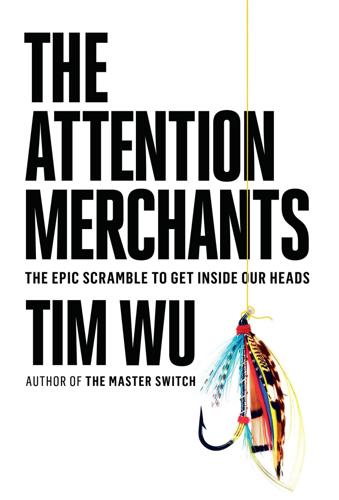
The Attention Merchants: The Epic Scramble to Get Inside Our Heads
by
Tim Wu
Published 14 May 2016
The theory of a growing “public sphere” in the eighteenth and nineteenth centuries belongs to Jürgen Habermas, who premised it on the rise of newspaper reading, coffeehouse discussions, and other places for communications among members of the public. See also Jürgen Habermas, The Structural Transformation of the Public Sphere, trans. Thomas Burger (Cambridge, MA: MIT Press, 1991); and Robert E. Park, “Sociology and the Social Sciences: The Social Organism and the Collective Mind,” American Journal of Sociology 27 (1921). 5. For more on cognitive models on attention, see Michael I. Posner and Charles R.

The Zero Marginal Cost Society: The Internet of Things, the Collaborative Commons, and the Eclipse of Capitalism
by
Jeremy Rifkin
Published 31 Mar 2014
White River Junction, VT: Chelsea Green, 2001. Gupta, Shanti. The Economic Philosophy of Mahatma Gandhi. New Delhi: Concept Publishing Company, 1994. Haber, Samuel. Efficiency and Uplift: Scientific Management in the Progressive Era 1890–1920. Chicago: University of Chicago Press, 1964. Habermas, Jurgen. The Structural Transformation of the Public Sphere. Cambridge, MA: MIT Press, 1991. Haidt, Jonathan. The Happiness Hypothesis. New York: Basic Books, 2006. Hannesson, Rognvaldur. The Privatization of the Oceans. Cambridge, MA: MIT Press, 2004. Hart, Sura and Victoria Kindle Hodson. The Compassionate Classroom: Relationship Based Teaching and Learning.
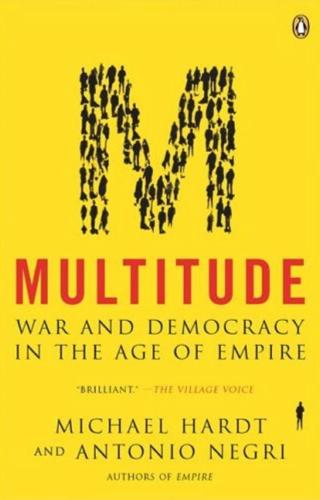
Multitude: War and Democracy in the Age of Empire
by
Michael Hardt
and
Antonio Negri
Published 1 Jan 2004
Hegel read their work and transcribed it into his own idiom, powerfully transforming it, the same way Habermas, for example, transcribes “public opinion” into “public sphere.” 48 On Jürgen Habermas’s interpretation of Hegel’s concept of civil society as interaction, see “Arbeit und Interaktion: Bemerkungen zu Hegels Jenenser Philosophie des Geiste,” in Habermas, Technik und Wissenschaft als “Ideologie” (Frankfurt: Suhrkamp, 1968). See also Jürgen Habermas, The Structural Transformation of the Public Sphere, trans. Thomas Burger (Cambridge: Polity, 1989); and The Theory of Communicative Action, trans. Thomas McCarthy, 2 vols. (Boston: Beacon, 1984, 1987). On Habermas’s notion of the public sphere, see Craig Calhoun, ed., Habermas and the Public Sphere (Cambridge, MA: MIT Press, 1992). 49 See Niklas Luhmann, Essays on Self-Reference (New York: Columbia University Press, 1990); and The Reality of Mass Media, trans.
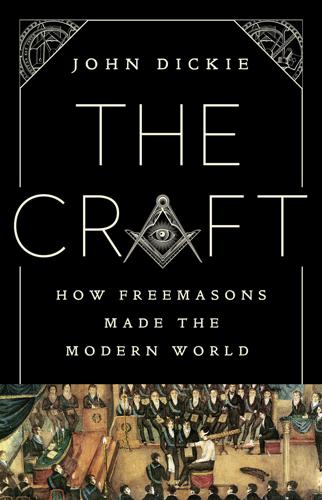
The Craft: How Freemasons Made the Modern World
by
John Dickie
Published 3 Aug 2020
Everitt, ‘The English Urban Inn, 1560–1760’, in A. Everitt (ed.), Perspectives in English Urban History, London, 1973. M. Goldie, ‘The English system of liberty’, in M. Goldie and R. Wokler (eds), The Cambridge History of Eighteenth-Century Political Thought, Cambridge, 2006. J. Habermas, The Structural Transformation of the Public Sphere: An Inquiry into a Category of Bourgeois Society, Cambridge, MA, 1989. D.G. Hackett, That Religion in Which All Men Agree: Freemasonry and American Culture, Berkeley, CA, 2014. Another fundamental study. Accounts of Masonic procession in Charleston, quoted p. 19. The book also has a fine chapter on Native-American Masonry.
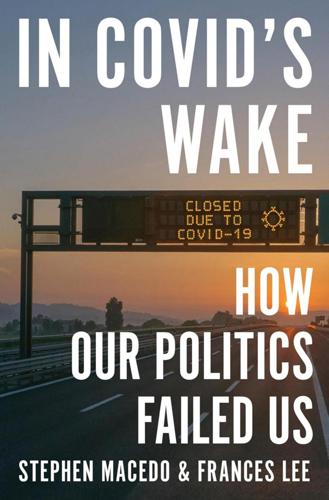
In Covid's Wake: How Our Politics Failed Us
by
Stephen Macedo
and
Frances Lee
Published 10 Mar 2025
Given the magnitude of the policy responses to Covid, and its unprecedented nature, it is surprising that there has not been a more searching effort on the part of universities to reassess Covid policy, including their own institutional responses. Colleges and universities pursued widely differing policies and posted both the policies and health data on their websites: Who is researching this apparently quite rich natural experiment? 40. Jürgen Habermas, The Structural Transformation of the Public Sphere: An Inquiry into a Category of Bourgeois Society, trans. Thomas Burger (Cambridge, MA: MIT Press, 1992), 101–9; Zac Gershberg and Sean Illing, The Paradox of Democracy: Free Speech, Open Media, and Perilous Persuasion (Chicago: University of Chicago Press, 2022), 252–59. 41.

Future Politics: Living Together in a World Transformed by Tech
by
Jamie Susskind
Published 3 Sep 2018
London: Transaction, 1995. Habermas, Jürgen. The Future of Human Nature. Cambridge: Polity Press, 2003. Habermas, Jürgen. The Theory of Communicative Action:Volume 1. Reason and the Rationalization of Society.Translated by Thomas McCarthy. Cambridge: Polity Press, 2004. Habermas, Jürgen. The Structural Transformation of the Public Sphere:An Inquiry into a Category of Bourgeois Society. Translated by Thomas Burger with the assistance of Frederick Lawrence. Cambridge: Polity Press, 2008. Habermas, Jürgen. Between Facts and Norms. Translated by William Rehg. Cambridge: Polity Press in association with Oxford: Basil Blackwell, 2010.
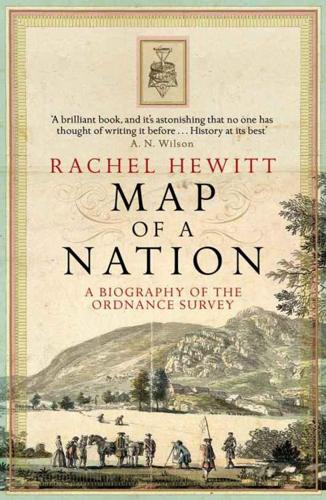
Map of a Nation: A Biography of the Ordnance Survey
by
Rachel Hewitt
Published 6 Jul 2011
Grenier, Katherine Haldane, Tourism and Identity in Scotland, 1770–1914: Creating Caledonia, Aldershot: Ashgate, 2005. Guest, Harriet, ‘Suspicious Minds: Spies and Surveillance in Charlotte Smith’s Novels of the 1790s’, pp. 169–87 in De Bolla, Leask and Simpson (eds), 2005. Habermas, Jürgen, The Structural Transformation of the Public Sphere, trans. Thomas Burger, Cambridge, Mass.: MIT Press, 1989. Hacking, Ian, The Taming of Chance, Cambridge: Cambridge University Press, 1991. First published 1990. Haefner, Joel, ‘Displacement and the Reading of Romantic Space’, Wordsworth Circle, 23, pp. 151–6, 1992. Hamilton, George, A History of the House of Hamilton, Edinburgh: J.

Nexus: A Brief History of Information Networks From the Stone Age to AI
by
Yuval Noah Harari
Published 9 Sep 2024
Michiel van Groesen, “Reading Newspapers in the Dutch Golden Age,” Media History 22, no. 3–4 (2016): 334–52, doi.org/10.1080/13688804.2016.1229121; Arthur der Weduwen, Dutch and Flemish Newspapers of the Seventeenth Century, 1618–1700 (Leiden: Brill, 2017), 181–259; “Courante,” Gemeente Amsterdam Stadsarchief, April 23, 2019, www.amsterdam.nl/stadsarchief/stukken/historie/courante/. 43. van Groesen, “Reading Newspapers in the Dutch Golden Age.” Newspapers appeared around the same time also in Strasbourg, Basel, Frankfurt, Hamburg, and various other European cities. 44. Jürgen Habermas, The Structural Transformation of the Public Sphere: An Inquiry into a Category of Bourgeois Society, trans. Thomas Burger (Cambridge, U.K.: Polity Press, 1989); Benedict Anderson, Imagined Communities: Reflections on the Origin and Spread of Nationalism (London: Verso, 2006), 24–25; Andrew Pettegree, The Invention of News: How the World Came to Know About Itself (New Haven, Conn.: Yale University Press, 2014). 45.
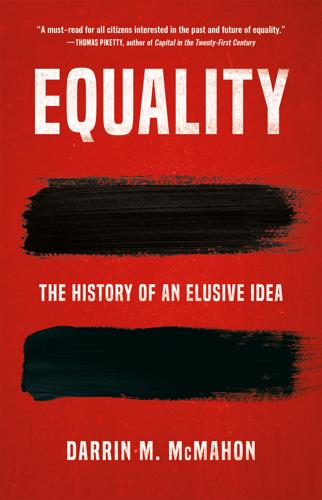
Equality
by
Darrin M. McMahon
Published 14 Nov 2023
For accounts that place the origin of modern equality in the seventeenth century among either English Protestants or the Radical Enlightenment tradition tracing to Spinoza, see Jeremy Waldron, God, Locke, and Equality: Christian Foundations in Locke’s Political Thought (Cambridge: Cambridge University Press, 2002); and Jonathan Israel, Enlightenment Contested: Philosophy, Modernity, and the Emancipation of Man, 1670–1752 (Oxford: Oxford University Press, 2006), 545–571. 8. The locus classicus for the extensive literature on sociability, the public sphere, and equality is Jürgen Habermas, The Structural Transformation of the Public Sphere: An Inquiry into a Category of Bourgeois Society, trans. Thomas Burger (Cambridge, MA: MIT Press, 1989). For a careful consideration of the legacies of both Marx and Tocqueville, and a creative interpretation of the role of the “empire of fashion” in creating civic equality, see William H.
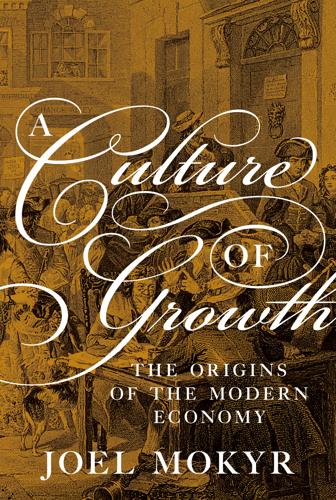
A Culture of Growth: The Origins of the Modern Economy
by
Joel Mokyr
Published 8 Jan 2016
Gundersheimer, Werner L. 1966. The Life and Works of Louis Le Roy. Geneva: Librairie Droz. Haberman, Jacob. 2007. “Delmedigo, Joseph Solomon.” In Encyclopaedia Judaica, Michael Berenbaum and Fred Skolnik, eds., second ed. Detroit: Macmillan Reference Vol. 5, pp. 543–44. Habermas, Jürgen. 1989. The Structural Transformation of the Public Sphere. Cambridge, MA: MIT Press. Hahn, Roger. 1986. “Laplace and the Mechanistic Universe.” In David C. Lindberg and Ronald L. Numbers, eds., God and Nature: Historical Essays on the Encounter between Christianity and Science. Berkeley: University of California Press, pp. 256–76. ———. 1990.

Power and Progress: Our Thousand-Year Struggle Over Technology and Prosperity
by
Daron Acemoglu
and
Simon Johnson
Published 15 May 2023
American and British Technology in the Nineteenth Century: The Search for Labour-Saving Inventions. Cambridge: Cambridge University Press. Haberler, Gottfried. 1932. “Some Remarks on Professor Hansen’s View on Technological Unemployment.” Quarterly Journal of Economics 46, no. 3: 558‒562. Habermas, Jürgen. [1962] 1991. The Structural Transformation of the Public Sphere. Cambridge, MA: MIT Press. Hacker, Jacob S. 2002. The Divided Welfare State: The Battle over Public and Private Social Benefits in the United States. New York: Cambridge University Press. Haigh, Thomas. 2006. “Remembering the Office of the Future: The Origins of Word Processing and Office Automation.”
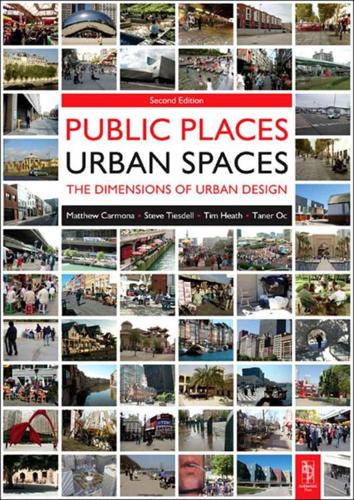
Public Places, Urban Spaces: The Dimensions of Urban Design
by
Matthew Carmona
,
Tim Heath
,
Steve Tiesdell
and
Taner Oc
Published 15 Feb 2010
Gender Equality and Urban Planning A ReGender Briefing Paper, Oxfam, London Gummer, J (1994) More Quality in Town and Country, Department of the Environment News Release 713, DoE, London H Haas, T (2008), New Urbanism and Beyond: Designing Cities for the Future, Rizzoli International, New York Habermas, J (1979) Communication and the Evolution of Society (translated by McCarthy, T) Beacon Press, Boston Habermas, J (1962) The Structural Transformation of the Public Sphere (translated by Burger, T & Lawrence, F), MIT Press, Cambridge, Mass Habraken, NJ (2000) (edited by Teicher, J) The Structure of the Ordinary: Form and Control in the Built Environment, MIT Press, Cambridge, MA Hague, R & Harrop, M (2004) Comparative Government and Politics: An introduction (sixth edition) Palgrave Macmillan, Basingstoke Hajer, M & Reijndorp, A (2001) In Search of New Public Domain, NAI Publishers, Rotterdam Hall, D (1991) Altogether misguided and dangerous – A review of Newman & Kenworthy (1989), Town & Country Planning, 60(11/12), 350–351 Hall, P (1998) Cities in Civilisations: Culture, Innovation and Urban Order, Weidenfeld & Nicolson, London Hall P (1995) Planning and urban design in the 1990s Urban Design Quarterly, 56, 14–21 Hall, P & Imrie, R (1999) Architectural practices and disabling design in the built environment’, Environment & Planning B: Planning & Design, 26, 409–425 Hall, P (1973) Great Planning Disasters, Weidenfeld, London Hall, T (2008) Turning a Town Around: A Proactive Approach to Urban Design, Blackwell Publishing, Oxford Hall, T (1998) Urban Geography, Routledge, London Hancock, T & Duhl, L (1988) Promoting Health in the Urban Context, WHO Healthy Cities Papers No 1, Copenhagen, FADL Hannigan, J (1998) Fantasy City: Pleasure and Profit in the postmodern Metropolis, Routledge, London Harcourt, B E (2001) Illusion of Order: The false Promise of Broken Windows Policing, Harvard University Press, Cambridge, Mass Hardy D (2005) Poundbury, the Town that Charles Built, Town & Country Planning Association, London Hargroves, K C & Smith, MH (2005) The Natural Advantage of Nations, Earthscan Publications, London Hart, S I & Spivak, A L (1993) The Elephant in the Bedroom: Automobile Dependence and Denial: Impacts on the Economy and Environment, New Paradigm Books, Pasadena Harvey, D (2005) A Brief History of Neo-liberalism, Oxford University Press, Oxford Harvey, D (1997) The New Urbanism and the communitarian trap, Harvard Design Magazine (Winter/Spring) 68–69 Harvey, D (1989a) From managerialism to entrepreneurialism: The transformation in urban governance in late capitalism’, Geografiska Annaler Series B: Human Geography, 71(1), 3–17 Harvey, D (1990) The Condition of Postmodernity: An Enquiry into the Origins of Cultural Change, Basil Blackwell, Oxford Harvey, D (1989b) The Urban Experience, Blackwell, Oxford Hass-Klau, C (1990) The Pedestrian and City Traffic, Belhaven Press, London Hass-Klau, C; Crampton, G; Dowland, C; & Nold, I (1999) Streets as Living Space: Helping public Spaces Play Their Proper Role, Landor, London Hatherway, T (2000) Planning local movement systems’ in Barton H (2000) (editor) Sustainable Communities – The Potential for Eco-Neighbourhoods, Earthscan, London, 216-229 Hawkes, D (2003) Civic dimensions: Public places, urban spaces: The dimensions of urban design – Book Review’, Architectural Review, August Haworth, G (2009) Coin street housing: The architecture of engagement, in Ritchie & Thomas (Editors)Sustainable Urban Design – An Environmental Approach, second edition, Taylor & Francis, London, 116–131 Haughton, G & Hunter, C (1994) Sustainable Cities, Jessica Kingsley Publishers, London Hayden, D (2004) A Field Guide to Sprawl, WW Norton & Company, London Hayden, D (1995) The Power of Place: Urban Landscapes as Public History, MIT Press, Cambridge, Mass Hayden, D (1980) What would a non-sexist city be like?